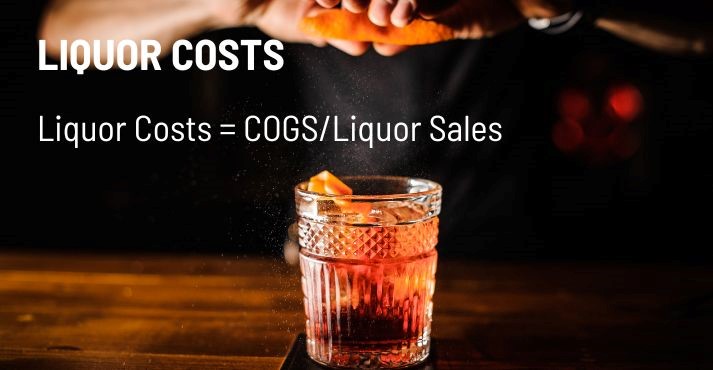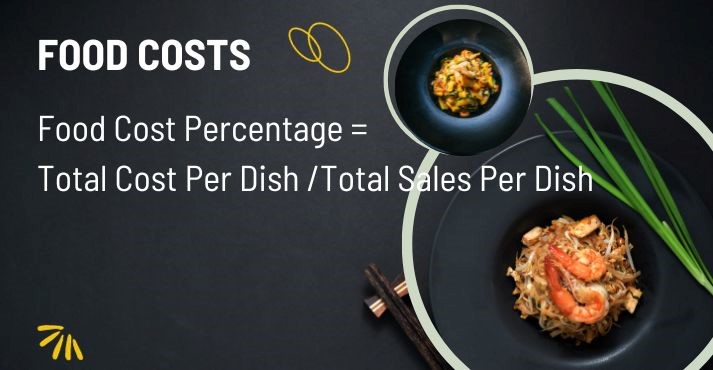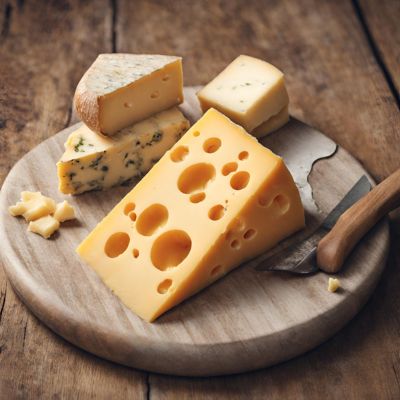As a marketable and successful manager in the F&B sector, you must have practical knowledge about all types of food and beverage costs.
Other than creating delectable dishes, you must know the average food cost in a restaurant to help with menu pricing, tracking costs, and hitting profitability targets.
As a critical monthly metric, the cost of goods sold (COGS) for food and beverage must be calculated as it represents the dollar amount spent on items used to prepare menu items sold to guests.
Also, the COGS may differ from the total spent on food purchases due to factors like bulk purchasing and items consumed but not sold to guests. Therefore, cost-control strategies must be examined and implemented for long-term success.
In this blog, we’ll explore how much restaurants spend on food, liquor, and labor costs.
Significant Costs in the Food and Beverage Industry
Running a successful restaurant involves managing various costs to enhance profitability. You must know the average restaurant food cost per month. The ‘Big Three Costs’ are liquor, food, and labor costs that impact the restaurant’s financial health.
Let’s delve deeper into beverage costs and learn how to calculate them.
1. Prime Costs
Prime costs in the food and beverage industry include your cost of goods sold (COGS) and labor costs.
The COGS includes food, alcohol & other beverages, packaging, and other costs associated with preparing and serving your menu items.
Labor costs include food and beverage inventory, payroll taxes, workers’ compensation, medical insurance, and employee benefits.
Benefits of understanding the prime costs associated with the food and beverage industry:
- Determine pricing strategies
- Financial management
- Make informed decisions
- Ensure profitability
- Avoid financial debt
Now that you understand the basic concept let’s look into the math to see how it works.
How to Calculate Prime Cost Using a Formula?
Prime costs are the lever to boost profits. The prime costs are the combination of your COGS and your total labor costs.
Use the formula below to calculate prime costs.
Total COGS + Total Labor = Prime Costs
COGS (Cost of Goods Sold) = Beginning Inventory + Purchases – Ending Inventory
Prime Costs as a Percentage of Sales
Ideally, prime costs should range between 55% to 65% of the total sales in your F&B business. Prime costs below 50% may suggest issues with food quality, overpricing, or understaffing.
Prime costs exceeding 70% can make it challenging to achieve profitability, as only 30% is left to cover other essential expenses.
For example, suppose you own a restaurant, and you want to analyze your prime costs based on the following expenses for a specific period:
Labor Costs: $6,500
Food and Beverage Cost of Goods Sold (COGS): $10,000
Total Sales for the period: $25,000
Prime Costs = Labor Costs + Food and Beverage COGS
Prime Costs = $6,500 + $10,000 = $16,500
Prime cost as a percentage of total sales:
Prime Cost Percentage = (Prime Costs / Total Sales) x 100
Prime Cost Percentage = ($16,500 / $25,000) x 100 = 66%
In this example, the prime cost percentage between 55% and 65% is considered ideal. In this case, your 66% falls within this range, which is good news.
It means you have 34% (100% – 66%) of your total sales to allocate for other expenses such as rent, utilities, insurance, and profits.
So, in this scenario, your prime cost percentage is within the recommended range, leaving you with a reasonable portion of your sales to cover other costs and generate profits.
2. Liquor Costs

A sharp understanding of your liquor costs will help ensure your restaurant is profitable. Managing your ROI regarding how much a beer at a restaurant costs and any non-alcoholic beverage represents the single most significant differentiator.
Benefits of understanding the liquor costs:
- Cost control
- Pricing optimization
- Inventory management
- Financial planning
- Waste reduction
- Fraud prevention
- Supplier negotiation
Liquor costs are determined by considering direct costs and gross margins, and the industry average for total beverage program costs ranges from 18% to 24% of total sales.
Different types of drinks within a beverage program have distinct cost percentages:
- Liquor costs are approximately 15%
- Draft beer costs average around 20%
- Bottled beer costs typically hover around 25%
- Wine costs can be notably higher, ranging from 30% to 40%
By understanding these cost percentages, businesses in the F&B sector can effectively manage their liquor costs to maximize profits while offering a competitive beverage selection.
So, how do you calculate the liquor costs? Let’s find out.
How to Calculate Liquor Costs Using a Formula?
If you are running a business in the F&B sector or planning to open a bar, consider the formula below to calculate the liquor costs.
Liquor Costs = COGS/Liquor Sales
For example, suppose for the year, your bar sold $12,000 worth of liquor inventory and generated sales of $60,000. To calculate the liquor cost percentage:
Liquor Cost Percentage = (Liquor Sales / Total Sales) x 100
Liquor Cost Percentage = ($12,000 / $60,000) x 100 = 20%
In this example, the liquor cost percentage is 20%. It means that for every dollar in sales, 20 cents are used to pay for the liquor, and the remaining 80 cents represent your gross margin.
3. Food Costs

Do you know the average food cost for a restaurant? Managing food costs is challenging and requires expert knowledge. Constant monitoring of food costs allows you to make strategic decisions.
Benefits of identifying and examining the food costs in the F&B sector:
- Identify measures for cost control
- Increase profitability
- Menu optimization
- Pricing strategy
- Inventory management for items
- Overall waste reduction
- Quality control
- Budgeting and financial planning
The industry average for food costs ranges between 28% and 35% to ensure the restaurant remains profitable.
Maintaining food costs within this range allows you to navigate the delicate balance between offering quality food and sustaining a viable business model.
How to Calculate Food Costs Using a Formula?
Calculating food costs without a benchmark for comparison can cause loss to business. It is a valuable metric that helps you identify inconsistencies between the food cost percentage and actual food costs in restaurant management.
Also, these costs do not consider inventory changes but focus on total costs and sales.
To calculate the average restaurant food cost, consider this formula:
Ideal Food Cost Percentage = Total Cost Per Dish /Total Sales Per Dish
For example, suppose your total cost per dish is $2,000, and the total sales per dish amount to $8,000. Your ideal food cost percentage is 25%.
Food Cost Percentage = (Total Cost per Dish / Total Sales per Dish) x 100
Food Cost Percentage = ($2,000 / $8,000) x 100 = 25%
The food cost percentage remains at 25%. If the actual food cost percentage differs from the ideal (25%), you can investigate potential issues like food waste or over-ordering.
Suppose your actual food cost percentage is 30%:
Percentage Difference = Actual Food Cost Percentage – Ideal Food Cost Percentage
Percentage Difference = 30% – 25% = 5%
There is a 5% difference between your actual and ideal food cost percentages in this scenario. This difference can come from food waste or over-ordering; now that we know this, we can reduce costs.
4. Labor Costs

Labor costs in the food and beverage industry are a hard nut to crack.
Labor costs in a restaurant encompass a wide range of labor-related expenses, going beyond hourly wages and salaried employees. The essential components of labor costs include salaried employees, hourly employees, bonuses, overtime, payroll taxes, health care, and vacation and sick days.
You need to target a range of 20-30% of gross revenue from your labor costs.
- Fast-food restaurants typically aim for labor costs around 25% of revenue
- Full-service restaurants aim for labor costs between 30% to 40% of revenue
It would be best to balance service quality and cost control.
How to Calculate Labor Cost Using a Formula?
To determine labor costs as a percentage of total expenses, restaurant owners must calculate the sum of costs from different labor-related categories.
In this example, the following labor costs are provided for a given year:
- Salaries and wages: $120,000
- Bonuses: $10,000
- Overtime: $25,000
- Payroll taxes: $18,000
- Health care: $28,000
- Vacation and sick days: $6,000
- Total labor costs: $207,000
- Total Sales: $950,00
Labor Costs as a Percentage of Sales = Total Labor Costs/Total Sales
Labor Cost Percentage = (Total Labor Costs / Total Sales) x 100
Labor Cost Percentage = ($207,000 / $950,000) x 100 = 21.79%
Labor Cost Percentage is 21.79%. It means that for every dollar in sales, approximately 21.79 cents are spent on labor costs.
Frequently Asked Questions (FAQs)
What are the food and beverage costs?
Food and beverage costs include all the expenses related to purchasing, preparing, and serving food and drinks in a hospitality establishment.
- Cost of Goods Sold (COGS)
- Labor Costs
- Overhead Costs
- Other Operating Costs
What are the top 3 costs in the F&B business?
The top 3 costs in the food and beverage business are:
- Liquor costs
- Food costs
- Labor costs
Conclusion
Food and beverage industry costs are unpredictable. These costs can hardly be underestimated. While it might seem like a hassle, controlling costs will turn a profit on each sale.
When you know all the top three costs, you can easily navigate tough times more successfully. Many businesses that fail to identify and calculate these costs suffer huge losses.
By doing all these calculations, you will effectively manage the costs of your business, increase profitability, and ultimately enhance the experience for your customers.






























